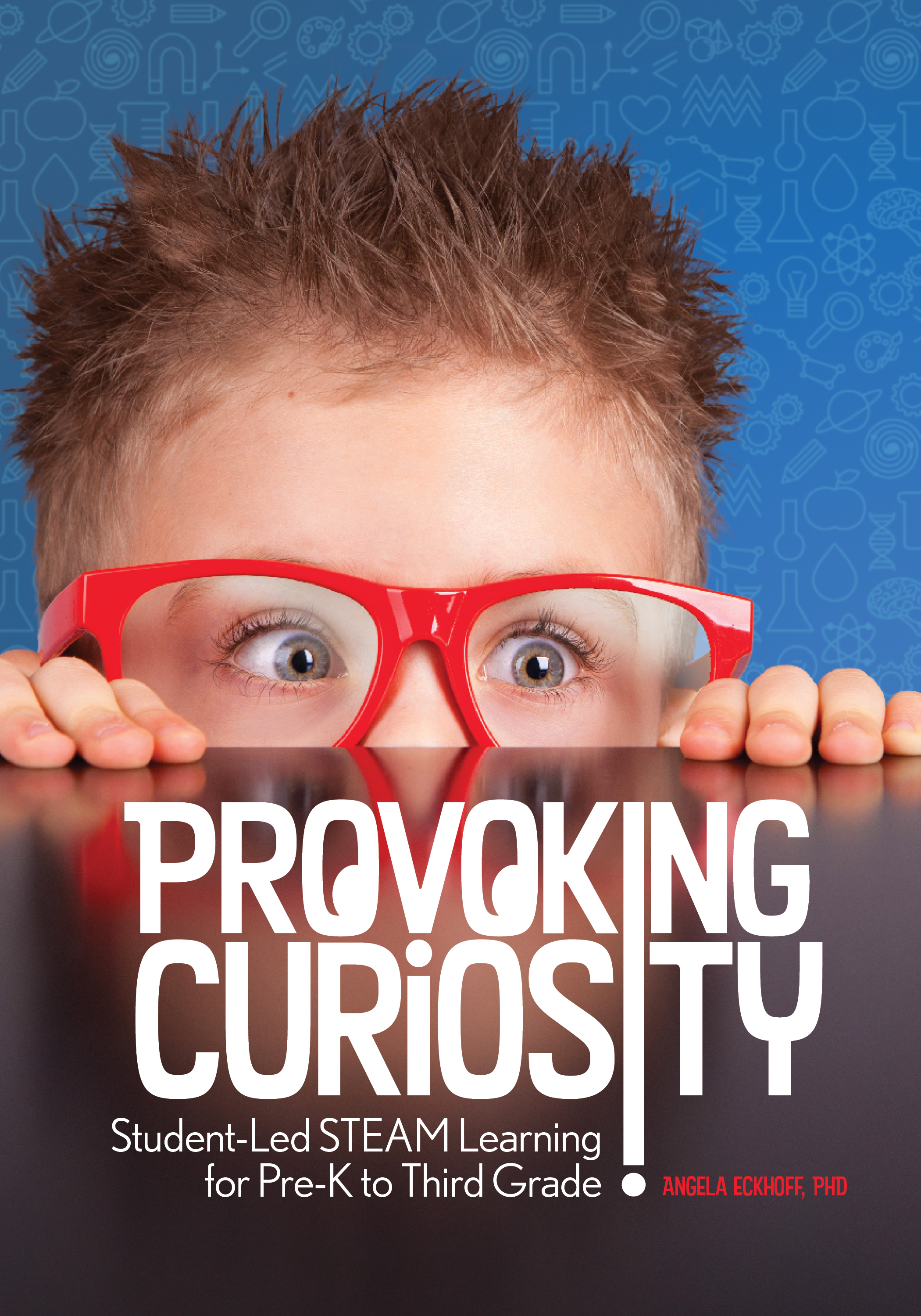In Provoking Curiosity: Student-Led STEAM Learning for Pre-K to Third Grade, Angela Eckhoff, PhD offers child-centered STEAM provocations that you can use in your daily classroom during short segments of less-structured time. A provocation is a child-driven exploration or interaction that encourages new ideas, connections, and ways of thinking. They can be used numerous times over the course of several days or longer as children gain experience and think though their original ideas and understandings. Because the experiences are intended to build skills in inquiry, design, and creative thinking, the products the children create are not of central importance; the processes they go through during the provocation are the most valuable outcome. Each new provocation begins with an open-ended question or prompt to encourage children to begin their explorations and investigations.
"There is no one right way or time to use a particular provocation, but it is important to connect their student-led work during provocations to other experiences in your classroom," shares Echoff. "In particular to science provocations, students are often working with a variety to materials, so you will want to take time to explain the materials that are available for them to use and also explain any restrictions for materials use that you'd like the students to follow. A brief introduction is typically all that is needed; remember to keep the experience as open ended and child led as possible, given the nature of the experience."
Physical-Change Collage Provocation
Physical changes are an important part of understanding the three common states of matter: solid, liquid, and gas. Physical changes can include changes in the shape or appearance of an object, such as tearing a piece of paper, dissolving sugar in water, or bending chenille stems into shapes. Physical changes do not make new substances. Because objects do not become new or different substances during a physical change, often the change can be reversed. For instance, a bent chenille pipe cleaner can be straightened. In this provocation, children are invited to conduct physical changes with everyday objects and to create collages using the materials they have manipulated.
Content and Skills Experienced
• Physical science: study of matter and physical change
• Visual arts: collage work
• Creativity skills: visualization, originality, strategic planning
Materials
• A variety of materials to alter (such as paper to tear, cut, or crumple; cardboard to bend or cut; watercolor paints to mix; chenille stems to bend; or clay to shape)
• Paper
• Scissors
• Glue or tape
Provocation Prompt
How can you change these materials to make them different than they are?
Differentiation By Grade Level
• Pre-K and kindergarten students will enjoy creating changes to the materials. Provide them with containers to put the materials in as they rip, tear, crumple, and cut. The children can create an ephemeral, or temporary, collage by just laying out their pieces in a design on their table while working individually or in a group. A temporary collage can encourage them to spend more time exploring the physical changes in the materials without the need to create a take-away product. This way, they can lay down, pick up, alter, and move objects countless times.
• For first-, second-, and third-graders, try encouraging them to create permanent collages using their altered materials and to add other arts media, such as mixed-color paints. Providing trays for children to work in will help to contain the materials and make cleanup easier.
Provoking Curiosity: Student-Led STEAM Learning for Pre-K to Third Grade provides teachers of children from preschool through 3rd grade new and easy-to-execute STEAM learning experiences. Each activity is developmentally appropriate and engages children—individually, in small groups, or in one large group—to think, explore, and wonder. Each exploration builds on core ideas in the STEAM disciplines, develops higher-level thinking skills, and uses readily available materials in early childhood classrooms. Use STEAM provocations throughout your busy day: jump-start the morning; decompress and reenergize midday; occupy children who complete assigned classroom work early; or incentive children to complete a goal.
